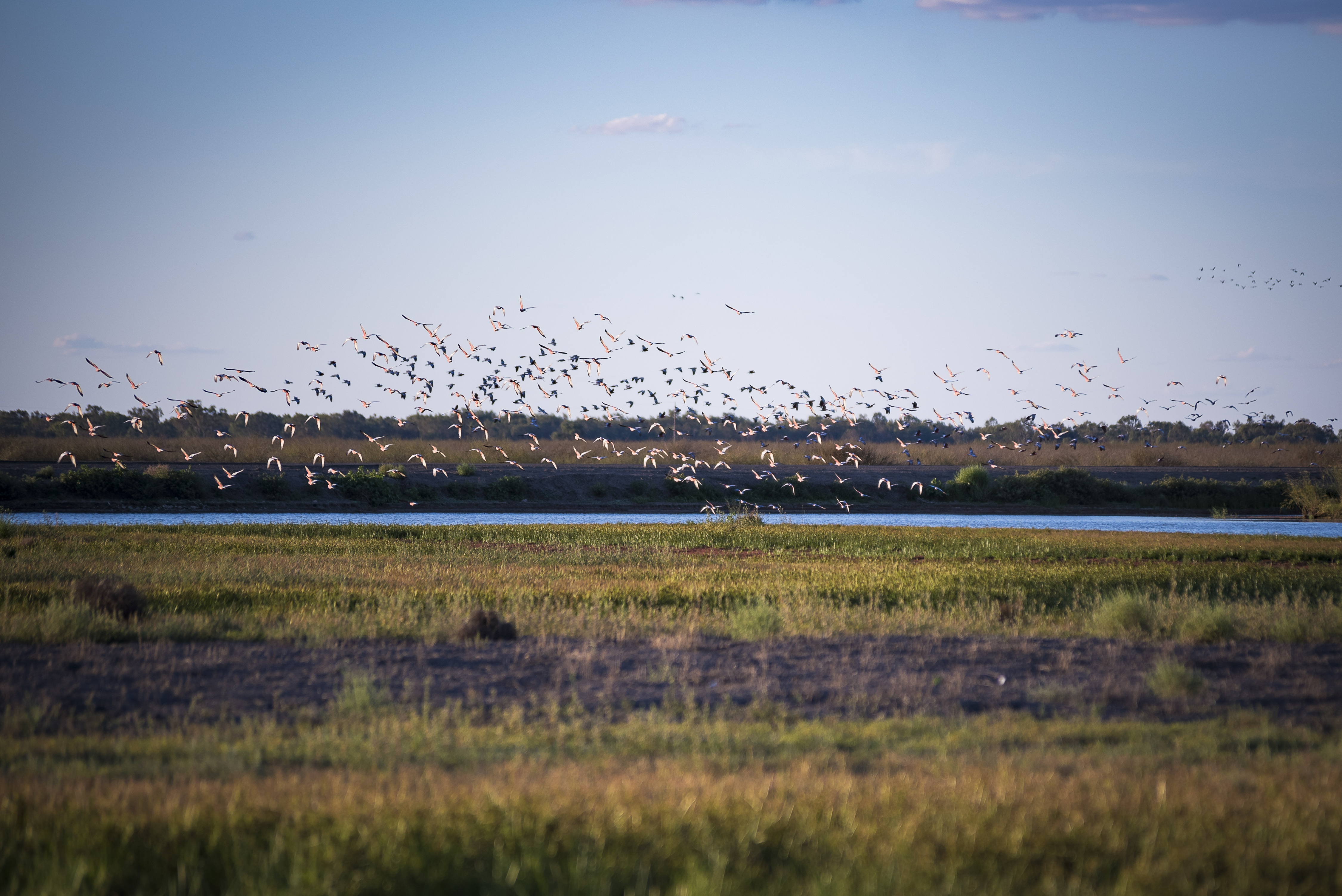Historic agreement between Traditional Custodians and NSW BCT seals permanent protection of Gayini for natural and cultural values
Media Contacts
-
Vanessa Billy
Communications Manager
The Nature Conservancy Australia
Phone: 0478 638 180
Email: vanessa.billy@tnc.org
The Nari Nari Tribal Council (NNTC) and the NSW Government have signed a historic agreement that secures the permanent protection and sustainable management of more than 55,000 hectares of land at Gayini under the ownership and stewardship of its Traditional Custodians.
“Nari Nari is proud to be leading the way in First Nation’s land and water management, with the announcement of this ground-breaking agreement,” NNTC chair, Jamie Woods, said.
NSW Minister for Environment James Griffin said this is the largest parcel of land ever protected through a funded conservation agreement with the NSW Biodiversity Conservation Trust (BCT).
“The Gayini Nimmie Caira Conservation Area, in the state’s southwest, is in one of the most ecologically significant parts of Australia, and at 55,220 hectares, it’s massive,” Mr Griffin said.
“Through the NSW BCT, we’ve entered into a funded conservation agreement with the owners of the property, the Nari Nari Tribal Council, to help them protect the extremely important biodiversity and cultural values on this property forever.”
Gayini is 88,000-hectares of internationally significant Lowbidgee floodplain in southern NSW, the largest remaining area of wetlands in the Murrumbidgee Valley in the southern Murray-Darling Basin. It sits within the traditional homelands of the Nari Nari people, who have cared for and been supported by the land and the river for tens of thousands of years.
Important natural habitats on the property include extensive wetlands, including lakes and floodplains with large areas of lignum, river and red gum forests. These provide habitat for threatened animals and plants such as the Australasian bittern, Australian painted-snipe, Southern bell frog and Mossgiel Daisy.
Significant cultural features include well preserved burial mounds, scar trees and camp sites, which continue to be cared for by the Nari Nari community.
The new conservation agreement with the NSW BCT, the largest funded agreement ever established with a First Nations group in New South Wales, establishes a Conservation Area under the stewardship of NNTC, to protect the natural and cultural values of the property, with the support of a consortium including The Nature Conservancy, the Murray Darling Wetlands Working Group and the Centre for Ecosystem Science at the University of NSW.
“The Gayini project is driven by Nari Nari Tribal Council, in partnership with The Nature Conservancy, Murray Darling Wetlands Working Group and the University of NSW. This consortium partnership benefits all participants, in that it brings together expertise that ultimately benefits People, Culture and Country,” Mr Woods said.
“This historic conservation agreement is a great illustration of how First Nations-led conservation can help Australia meet its national target of protecting 30% of its land and water by 2030,” Alison Rowe, TNC’s Managing Director, said.
Dr James Fitzsimons, TNC’s Director of Conservation and Science, said that the BCT Conservation Agreement is a significant milestone for wetland and waterbird conservation in Australia.
“It integrates cultural and environmental management and supports a sustainably-managed and financed conservation property for the benefit of its Traditional Custodians, nature and the broader community,” Dr Fitzsimons said.
“Nari Nari extend their thanks to all our partners that supported this agreement, with special thanks to Dentons for their significant legal support,” Mr Woods said.
“This represents a wonderful opportunity to restore one of the most magnificent wetlands in the Murrray-Darling Basin, led and managed by the Nari Nari Tribal Council with community and government support,” said Professor Richard Kingsford, Director of the Centre for Ecosystem Science at the University of Sydney.
“We are very proud to be working with Nari Nari Tribal Council and consortium partners in this ground-breaking project. It is one of the best examples of community, science and government working together to achieve social, cultural and environmental outcomes in this unique part of the Murray-Darling Basin,” Ian Davidson, Chair of Murray Darling Wetlands Working Group ltd, said.
The Nature Conservancy is a global conservation organisation dedicated to conserving the lands and waters on which all life depends. Guided by science, we focus on getting things done efficiently and with the greatest positive impact for conservation. We’re a trusted organisation working in more than 70 countries and territories around the world on innovative solutions to our world’s toughest challenges so that nature and people can thrive together. To learn more about The Nature Conservancy in Australia, follow us on Facebook.
